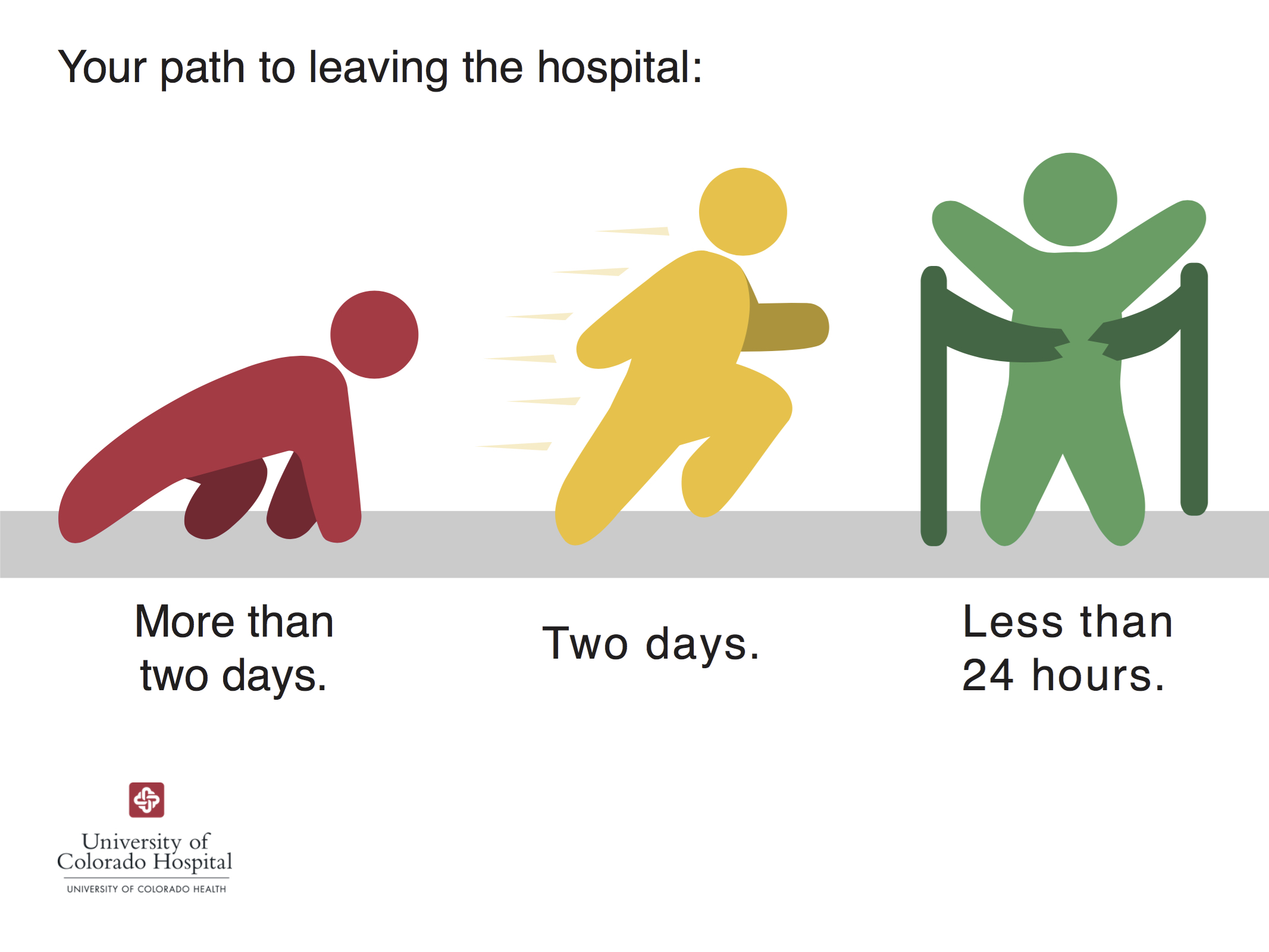Background:
Patient discharge is a complex process, requiring effective coordination between physicians, the interdisciplinary care team, patients, and their families. Patients often remain in the hospital after they are medically ready for discharge due to avoidable delays and inefficiencies in the discharge process.
Purpose:
Consequences of delayed discharge include patient dissatisfaction, increased potential for iatrogenic harm, and inefficient use of health care resources. A team of medical students sought to improve care team communication regarding patient ‘Estimated Day of Discharge’ on a medical-surgical floor in a large academic tertiary care hospital.
Description:
The team performed a current state analysis of discharge team roles and communication structures, then used PDSA methodology to formalize and disseminate associated workflows in an effort to address the most common communication failure modes encountered.
The primary barrier encountered was lack of shared communication around the ‘Estimated Day of Discharge’, preventing each care team member from performing their respective role in a timely fashion. Physicians were prompted to categorize each patient’s estimated discharge day in one of three categories: 1) greater than two days, 2) two days, or 3) within 24 hours. Categorization of Estimated Day of Discharge was shared in an interdisciplinary discharge planning conference, recorded in the patient’s electronic medical record (EMR), and used to update a visual indicator of Estimated Day of Discharge in the patient’s room (Figure 1), allowing patients and their families to be involved in the process.
During the month-long project period, average length of stay on the intervention floor was 0.4 days lower than on a similar non-intervention floor (a medical-surgical floor of similar acuity and case mix within the same hospital), and percentage of discharges by 2pm increased from 20% to 35%.
After implementation of the interventions, percentage of patients responding with a top box score to the HCAPHS question “Staff discussed whether you have the help you needed upon discharge” increased from 85.9% (3 month pre-intervention average) to 91.0% (3 month post-intervention average).
Conclusions:
Formalizing discharge communication, specifically physician estimates of time to discharge in conjunction with the use of a shared visual communication tool, was associated with reduced length of stay, earlier time of discharge, and improvement in measures of patient satisfaction. Next steps include integration of a care pathway within the EMR to standardize assessment of common discharge barriers by the appropriate team member to prevent avoidable delays in discharge.
